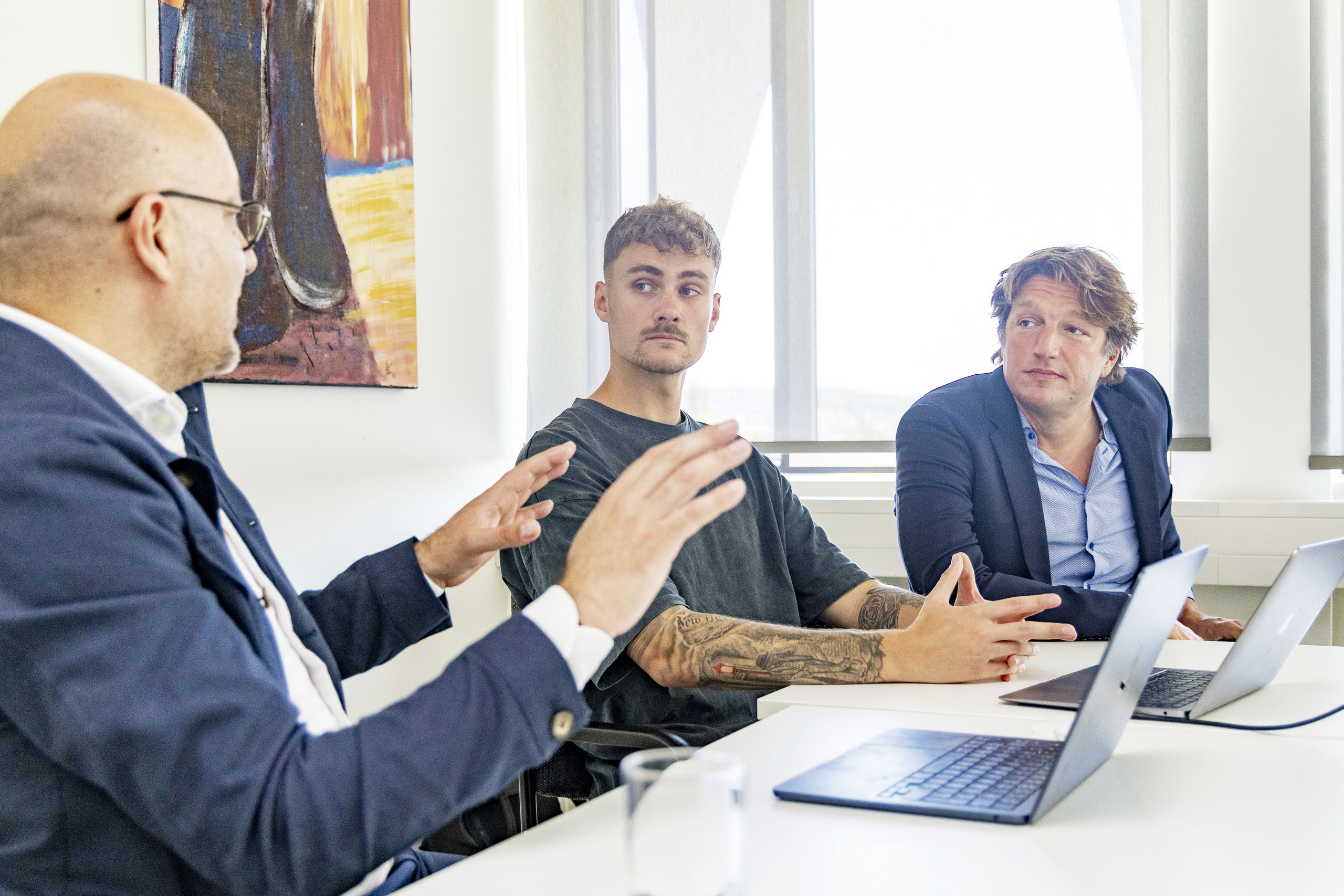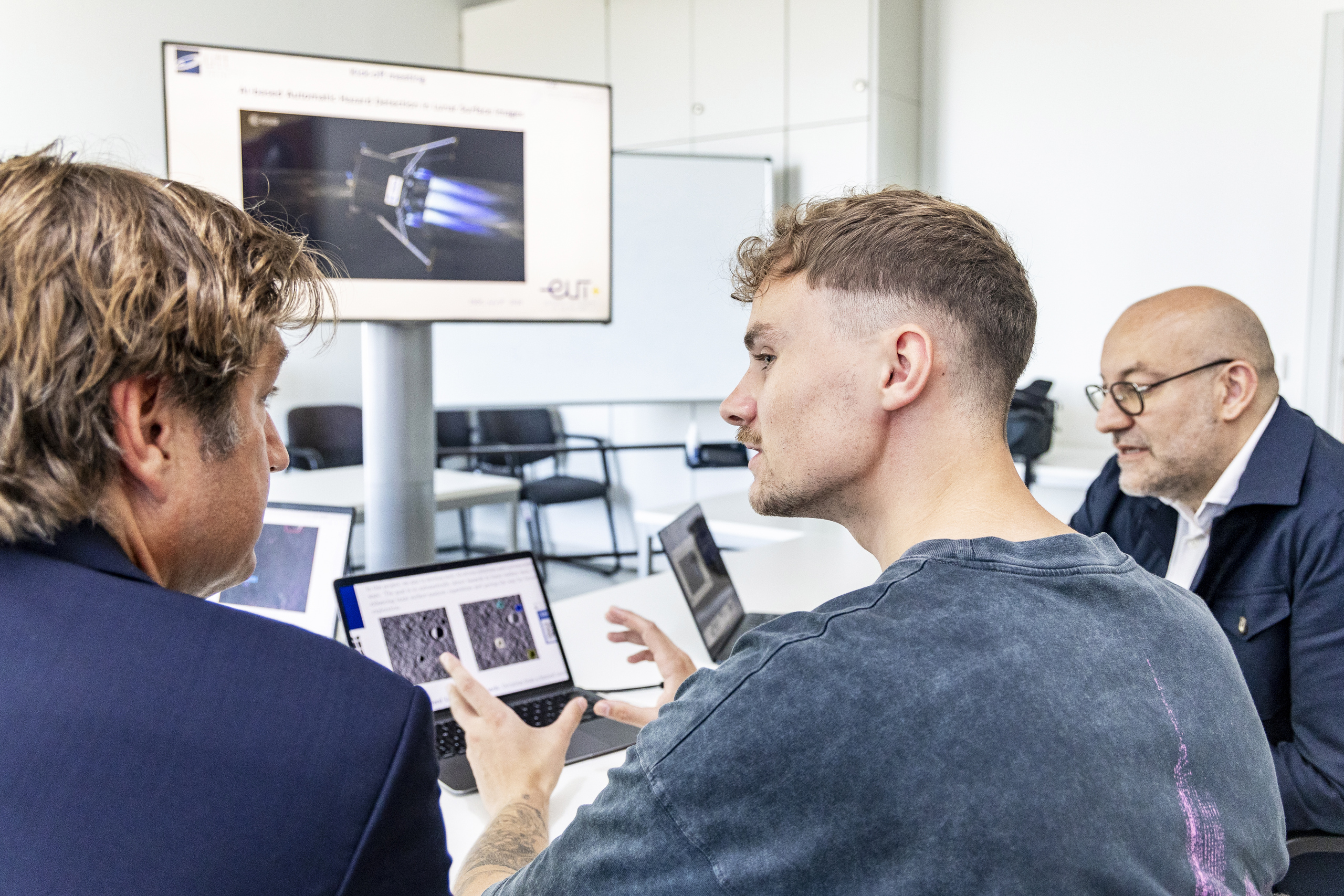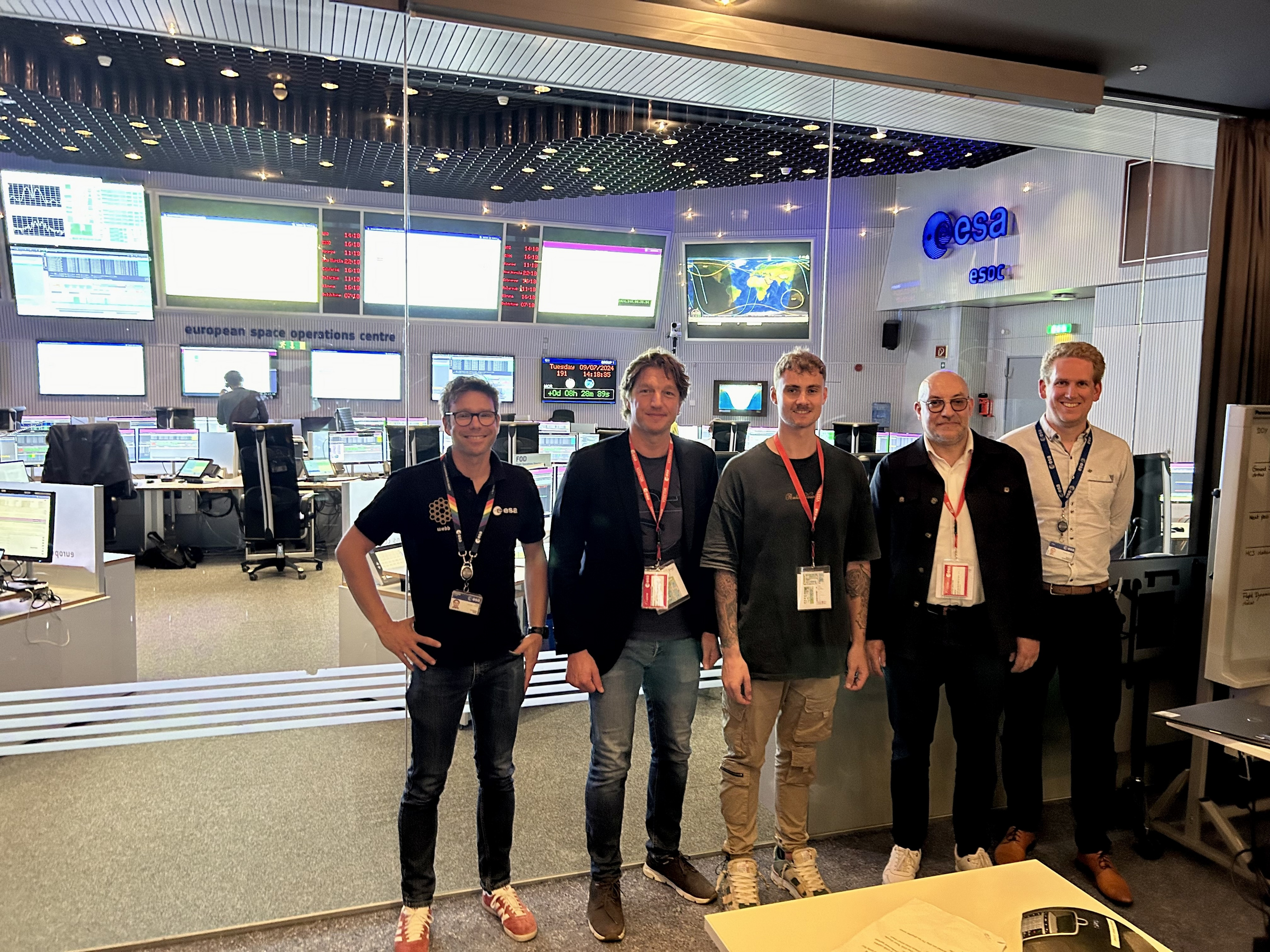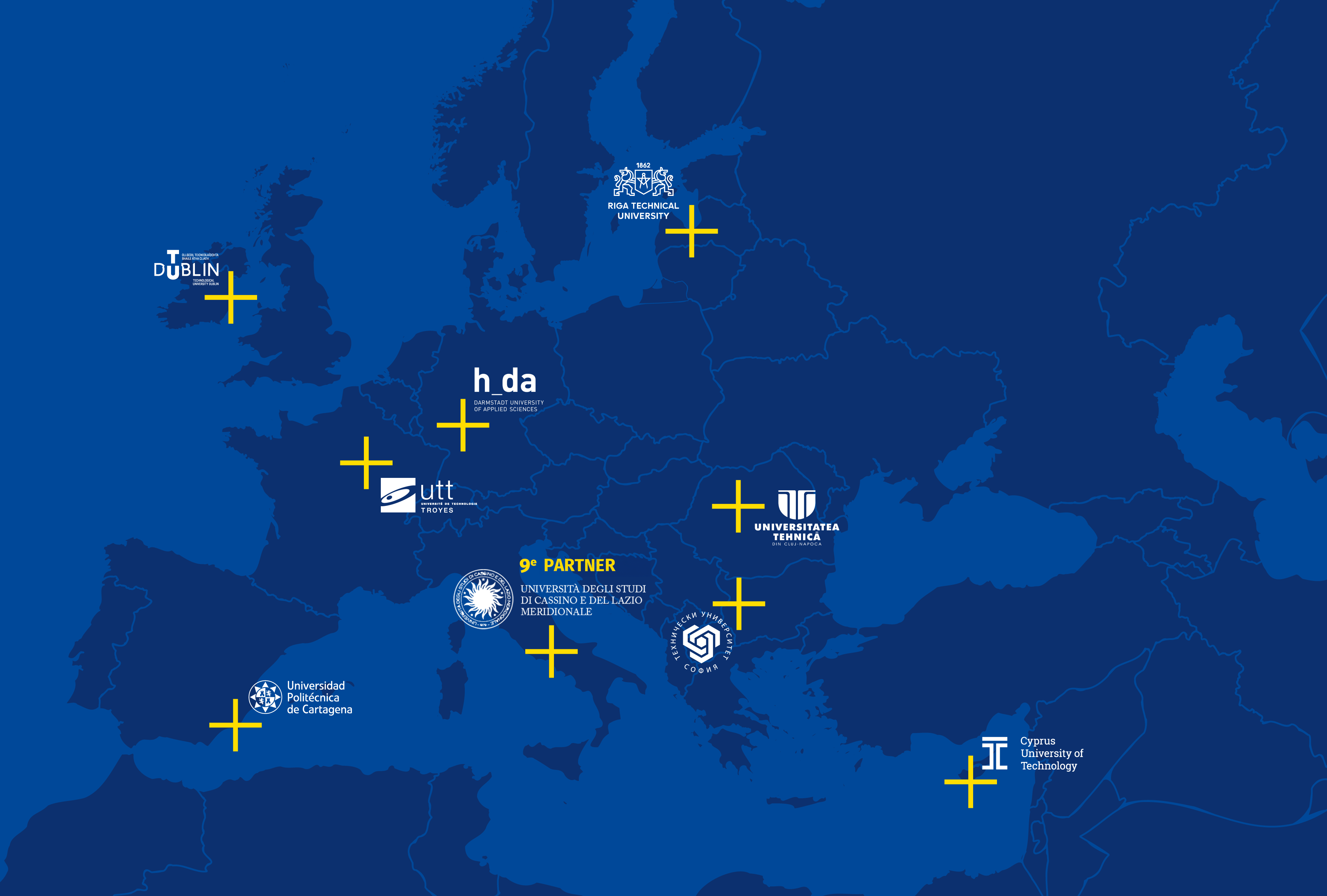AI for the ESA Moon mission
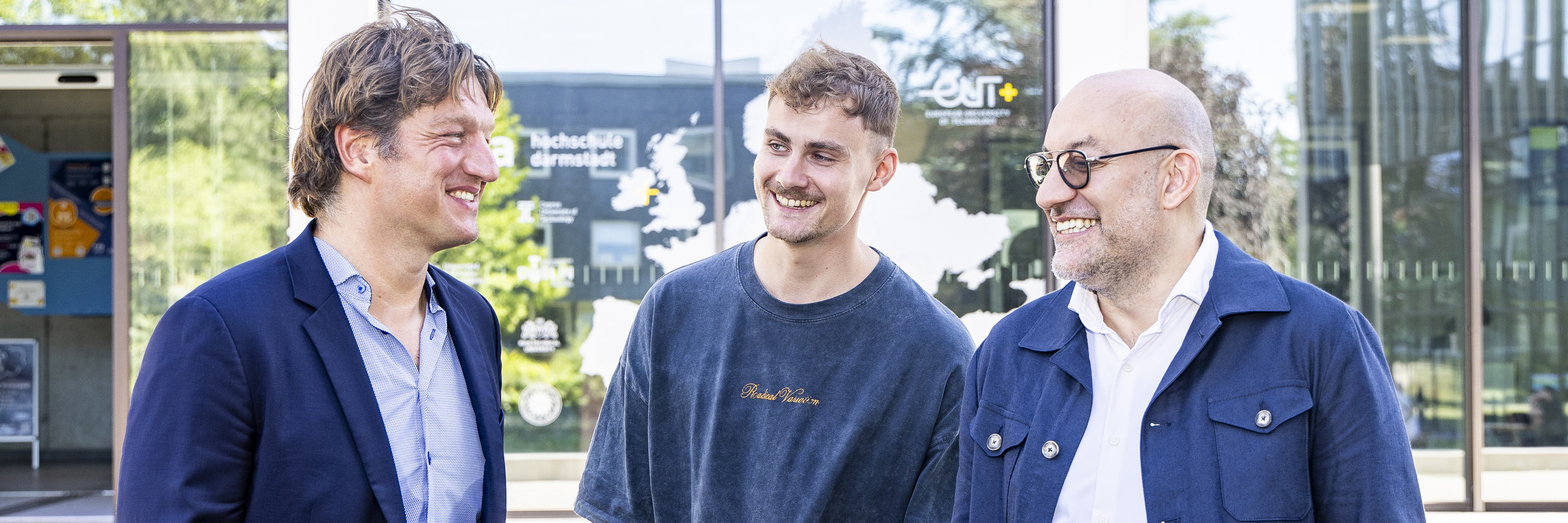
When ESA launches its next uncrewed space mission to the Moon, the Darmstadt University of Applied Sciences and the University of Technology of Troyes (UTT) will be “on board”. The universities already cooperate closely in the European University of Technology and are about to begin their first joint research project with the European Space Agency (ESA). Based on the latest methods from Machine Learning and Artificial Intelligence, a team of researchers from the h_da and the UTT will develop AI procedures to help land space probes safely on the Moon.
By Christina Janssen, 23 July 2024
You might think that Neil Armstrong’s “giant leap for mankind” in 1969 had somehow turned human beings and the Moon into the best of friends and our satellite orbiting at a distance of nearly 400,000 kilometres into a tourist attraction. Perhaps it will have human settlements in the not-too-distant future. After all, 55 years have passed since the Apollo 11 mission. Yet a landing on the Moon remains a technical challenge, even today. Most of the recent attempts to send uncrewed space probes to the Moon have failed. The Japanese lander “Hakuto-R” crashed after going out of control, and Russia’s and Israel’s attempts at lunar landings ended in similar fashion. When the U.S. Moon lander “Peregrine” burned up in the Earth’s atmosphere in January 2024, the whole world could see the drama surrounding the small lunar rover.
When expensive equipment becomes space debris
What is the problem? “Problems often occur during landing,” explains Professor Hichem Snoussi, an AI expert from the University of Technology of Troyes, one of nine partner universities in the EUT+ alliance. “The Moon’s surface has craters and large boulders that make it risky landing small probes.” A radio-controlled landing is not possible because of the distance between the Earth and the Moon. Therefore, it is important to identify suitable landing sites in advance and evaluate the status of the surface in order to make the mission more secure and to increase the probability of success. If something in that system goes wrong, equipment costing millions will become space debris.
Prof. Snoussi and his colleague from the h_da, Prof. Weinmann, want to contribute to resolving this problem. For two years now they have been cooperating closely in the EUT+ Data Science Lab. When ESA inquired at the Darmstadt University of Applied Sciences whether there were any interesting ongoing projects within the EUT+ alliance in the field of interpreting image data, Weinmann swung into action. He contacted his colleague in Troyes and suggested developing some ideas together: “Hichem was instantly captivated,” the mathematician reports. “We got together with two colleagues from ESA and worked out the current project.” The team then had to participate in a two-stage competition, but ultimately won through. Their project was selected and will now receive funds from ESA, “it’s a major step for the EUT+ Data Science Lab. And hopefully it will open doors to other projects with ESA,” Professor Snoussi said.
A PhD student with three workplaces
The research project bears the title “AI-based Automatic Hazard Detection in Lunar Surface Images.” The two professors, who share interests in Artificial Intelligence, Computer Vision and Machine Learning, will use the grant money to finance various parts of the project including a doctoral student. As of July, the mathematician Patrick Bauer, who has just finished his Master’s degree in mathematics at the OTH Regensburg, completes the team. In the coming years he will be a “flying scientist,” commuting between the three locations at h_da, UTT and the ESA campus. “While studying in Regensburg I already knew that I wanted to go abroad afterwards,” the young scientist says. “I’m looking forward to working in an international environment, and I’m proud to be the first PhD student to receive cooperative supervision in the EUT+ Data Science Lab.”
The heart of the project is the development of AI procedures to detect hazards on the Moon surface. This is important to help in landing ESA’s lunar rovers safely on the Moon. To this end, the EUT+ team is using image data from the Moon’s surface. The AI application has to learn to recognise hazards appearing in these images. There’s a crater here, and a boulder there. The training date consists of a huge number of pictures of the Moon’s surface. Classical approaches require labelled training data for an AI system to learn anything at all. Hence, the hazards on the images have to be located and classified in advance. This is a laborious job called “labelling” in the jargon, which is usually carried out manually. It involves labelling every image with a kind of code “explaining” it to the AI application. And that costs both time and money.
Latest technologies from image and language processing
“Our approach can make this process leaner and much more efficient,” Snoussi explains, adding, “We’re working with a system that very quickly spots all the dangerous objects – without annotation. This works in a similar way to ChatGPT: the system evaluates inconceivable quantities of existing image data from the internet and from databases which already have a description in text form.” So it combines the abilities of language models like ChatGPT with those of systems for image recognition – or the best of both worlds, if you will. The approach is called “zero-shot learning,” which is intended to render the elaborate and expensive work of annotation superfluous. A similar procedure is “few-shot learning,” which does not eliminate the manual work completely, but still saves a large portion of it. “We’re working here with the latest technologies from image and language processing,” Andreas Weinmann stresses. “We use existing AI systems that have already been trained and therefore ‘know’ a huge amount – although it’s knowledge about other image data than the ones we use. We’re now specifying these systems for our use case: for identifying rocks and craters on the surface of the Moon.”
In the third part of the EUT+ research team’s approach, the AI system should recognise hazards as deviations from the norm. The normal case is flat ground, and the deviations are craters and rocks. The images of the Moon’s surface are screened and then classified pixel by pixel. As so often in the realm of computing, the endpoint is either a zero or a one. A zero means ‘mission possible’. A one triggers the warning systems. The ultimate objective is that ESA can also say, “The Eagle has landed.” It would be a small step for a lunar rover and a giant leap for the EUT+.
More than a “dusty lump of rock”
Missions to the Moon continue unabated, but the general background has changed. In 1969, the United States’ Apollo 11 mission won the race to the Moon, making a manned lunar landing ahead of the Soviet Union. Back then it was more about politics than about science. Today it’s a different story, according to ESA astronaut Matthias Maurer in an Interview for the Helmholtz Association: “After the Apollo missions, people still thought the Moon was a dusty lump of rock, there was nothing worth having there. As a result of satellite missions, we now know that the Moon has many resources.” And that means important material for research, for instance rock samples and frozen bodies of water, which may provide clues about the origin of life on Earth. “The Moon is almost as old as the Earth, but its surface has not changed any more. It’s like a history book that we can study,” Maurer said. In addition, the Moon is to be used for trying out technology which will be needed for subsequent missions to Mars.
The hazard detection project of h_da and UTT kicked off officially at ESA on 9 July. The whole team (the scientists from the two universities and their colleagues from ESA) met face-to-face for the first time. This was a great moment – for everyone. “ESA’s Moon mission is a gigantic and ambitious project, and we’re providing one component of it,” says Hichem Snoussi with obvious pleasure. The project is also a pioneering step for the EUT+ alliance as it grows together. Patrick Bauer is the first PhD student to receive cooperative supervision in the EUT+ Data Science Lab. He should eventually receive a doctorate awarded jointly by the h_da and the UTT. Until then, he will be busy training the AI networks for the project and implementing the algorithms. The upcoming researcher is certain that this will work: “It’s an advantage to have several partners. Moving from one location to another helps me to obtain input from the various parties involved. I’m sure that the project will be a success. But for me that also means I have to put in good work for all the stakeholders: the h_da, the UTT and ESA.”
Contact in the h_da Science Editorial Office
Christina Janssen
Science Editor
University Communication
Tel.: +49 6151 533-60112
Email: christina.janssen@h-da.de
Translation: Elizabeth Hicks
Photography: Samira Schulz
Study programmes at h_da
You can find an overview of the Bachelor's degree and Master's degree programmes in Applied Mathematics, Photonics & Machine Vision, and Data Science on the h_da website.
Sources
Helmholtz interview with Matthias Maurer, 24 October 2022: “Why to the Moon?”
YouTube: “The Eagle Has landed”, The Flight of Apollo 11, 1969
DIE ZEIT, 9 January 2024: "Pittsburgh, wir haben ein Problem" (in German)
